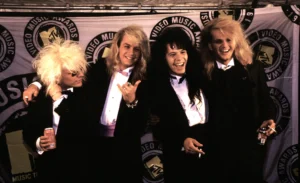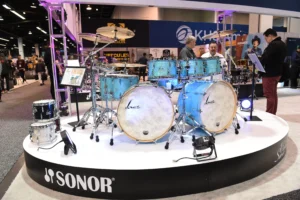Veteran jazz drummer and educator Michael Carvin has returned to the stage with renewed purpose, reaffirming his legacy as one of jazz’s most committed rhythm architects and a formidable voice in music education. His recent performance in San Francisco marked not just a concert appearance, but a powerful reintroduction to audiences after a period of relative quiet.
Michael Carvin, now 79, performed with his quartet at the SFJAZZ Center earlier this year. The performance served as a tribute to Black History Month, and also highlighted the drummer’s continued relevance and presence in the jazz community. His playing was thoughtful, direct, and unwavering in its intention. As he moved between playing and narration, Carvin brought attention not only to music but to the broader cultural impact of the Black artists whose work he was honoring. He referenced John Coltrane, Thelonious Monk, and Billy Taylor, connecting the music with a historical consciousness that has long been central to his view of jazz as a form of Black classical music.
Carvin has spent his life immersed in rhythm, both onstage and in the classroom. While he has performed with legends including Freddie Hubbard, McCoy Tyner, Pharoah Sanders, and Jackie McLean, it is his role as a teacher that has cemented his status among multiple generations of drummers. Based in New York, Carvin has trained over 300 drummers, many of whom have gone on to successful professional careers. However, his measure of success has little to do with resumes or accolades. What matters, according to Carvin, is whether a student becomes a drummer in the fullest sense, not just someone who plays the drums.
“I don’t teach drums,” he said plainly during his visit to San Francisco. “I teach drummers. If you want to learn to play drums, go to YouTube. You want to be a drummer, come to me.”
Carvin’s teaching philosophy is rooted in a deep respect for discipline, listening, and patience. He often emphasizes that the journey to musical maturity is not fast, nor should it be. He encourages students to avoid shortcuts and instead spend time listening to themselves. “Don’t practice for two hours,” he once told a class. “Practice for 20 minutes, and listen to what you did.”
He does not use traditional notation in his lessons, believing it can interfere with a player’s natural musical instincts. His focus is on feel, sound, and attention — the essentials of musical connection. His methods, though demanding, have earned him a devoted group of students over the years, many of whom credit Carvin not just with teaching them music, but with reshaping their relationship to time and sound entirely.
Born in Houston, Carvin received early training from his father, himself a professional drummer. He began his career in the early 1960s as part of Motown’s studio team before relocating to New York in 1973. Once there, he quickly established himself as a reliable and expressive player across a wide range of jazz styles.
His San Francisco performance was less about showcasing speed or power and more about space and clarity. Even when silent, his presence anchored the ensemble. There were moments when Carvin paused between phrases, not for show, but to allow the music to settle. It was playing that invited listening.
Now back in New York, Carvin continues to mentor serious students privately. Though he no longer tours extensively, his influence remains visible throughout the jazz world. Younger drummers still seek out his knowledge, and colleagues continue to refer to him as a “drummer’s drummer,” someone whose name carries weight even among seasoned professionals.
Carvin’s return to the public stage doesn’t signal a new phase as much as it confirms the continuation of a path he never truly left. With his steady hands and sharper-than-ever instincts, he remains a teacher, a thinker, and above all, a musician who understands that time, musical or otherwise, is always worth respecting.



